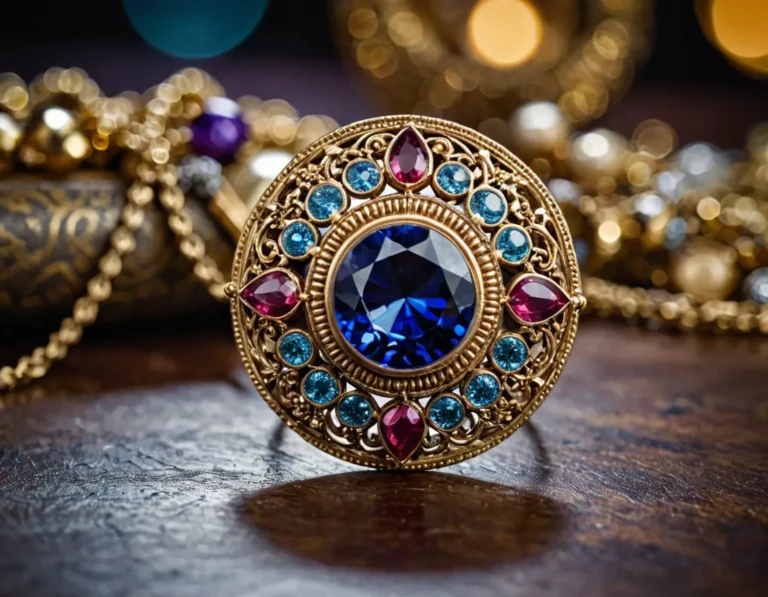Buying Vintage and Antique Jewelry: 10 Essential Tips for Collectors
Vintage and antique jewelry pieces are timeless treasures that can add a touch of elegance and history to your collection. Whether you’re a seasoned collector or just starting out, navigating the world of vintage jewelry can be both exciting and challenging. In this guide, we’ll explore 10 essential tips to help you make informed decisions when buying vintage and antique jewelry.
1. Know Your Eras
Understanding different jewelry eras is crucial when collecting vintage pieces. Here’s a quick overview of major jewelry periods:
| Era | Years | Characteristics |
|---|---|---|
| Victorian | 1837-1901 | Romantic motifs, nature-inspired designs |
| Edwardian | 1901-1910 | Delicate, lacy designs with platinum and diamonds |
| Art Nouveau | 1890-1910 | Flowing lines, nature themes, enamel work |
| Art Deco | 1920-1935 | Geometric shapes, bold colors, exotic influences |
| Retro | 1935-1950 | Large, bold designs, patriotic themes |
| Mid-Century | 1950-1960 | Abstract designs, textured gold, colored stones |
Familiarizing yourself with these eras will help you identify and appreciate the unique characteristics of each piece you encounter.
2. Research Hallmarks and Signatures
Hallmarks and signatures can provide valuable information about a piece’s origin, age, and authenticity. Here’s what to look for:
- Maker’s marks: Stamps or engravings indicating the jeweler or company
- Metal purity marks: Stamps showing the metal’s quality (e.g., 14K, 925)
- Date letters: Used in some countries to indicate the year of manufacture
- Patent numbers: Can help date a piece to a specific time period
Take time to learn about common hallmarks and invest in a loupe (magnifying glass) to examine jewelry closely.
3. Assess the Condition
The condition of vintage jewelry greatly affects its value. Consider these factors:
- Wear and tear: Look for signs of excessive wear or damage
- Repairs: Check for visible repairs or alterations
- Stones: Ensure all stones are secure and undamaged
- Clasps and fastenings: Test that all mechanisms work properly
Remember, some wear is expected in vintage pieces and can add character. However, significant damage or poor repairs can decrease value.
4. Understand Materials
Familiarize yourself with common materials used in vintage jewelry:
| Material | Characteristics | Care Tips |
|---|---|---|
| Gold | Warm color, doesn’t tarnish | Clean with mild soap and water |
| Silver | Cool tone, can tarnish | Use a silver polishing cloth |
| Platinum | Dense, durable, white metal | Professional cleaning recommended |
| Diamonds | Hardest gemstone, brilliant sparkle | Clean with mild detergent solution |
| Pearls | Delicate, organic gem | Wipe with soft, damp cloth |
Knowing these materials will help you care for your pieces and spot potential fakes.
5. Learn About Gemstones
Gemstones are a crucial part of many vintage jewelry pieces. Here are some popular stones in antique jewelry:
- Diamonds
- Rubies
- Sapphires
- Emeralds
- Opals
- Amethysts
- Garnets
- Turquoise
Research how these stones were typically cut and set in different eras to help authenticate pieces.
6. Buy from Reputable Sources
When purchasing vintage jewelry, always buy from trusted sources:
- Established antique dealers
- Reputable auction houses
- Certified online marketplaces
- Estate sales from known collectors
Avoid buying from unknown sellers or deals that seem too good to be true.
7. Ask for Documentation
Whenever possible, request documentation for your vintage jewelry:
- Certificates of authenticity: Verify the piece’s origins
- Appraisals: Provide value estimates from experts
- Provenance: Documentation of the item’s history and previous owners
These documents can increase a piece’s value and help with insurance or resale.
8. Consider Reproductions and Revivals
Be aware that not all “vintage-looking” pieces are genuinely antique. Some may be:
- Reproductions: Modern pieces made to look old
- Revivals: New jewelry inspired by vintage styles
While these can be beautiful, they typically don’t have the same value as authentic vintage pieces. Learn to spot the differences to make informed purchases.
9. Set a Budget
Vintage jewelry can vary widely in price. Set a budget before you start shopping to avoid overspending. Consider factors like:
- Rarity of the piece
- Condition
- Historical significance
- Materials used
Remember, sometimes less expensive pieces can be just as beautiful and meaningful as high-end items.
10. Care and Maintenance
Proper care is essential to preserve your vintage jewelry. Follow these tips:
- Store pieces separately to prevent scratching
- Keep jewelry away from heat and sunlight
- Remove jewelry before bathing or swimming
- Clean gently using appropriate methods for each material
- Have valuable pieces professionally cleaned and inspected regularly
Conclusion
Collecting vintage and antique jewelry can be a rewarding hobby that allows you to own a piece of history. By following these 10 tips, you’ll be well-equipped to navigate the world of vintage jewelry and make informed purchases. Remember to always buy from reputable sources, do your research, and trust your instincts. Happy collecting!
